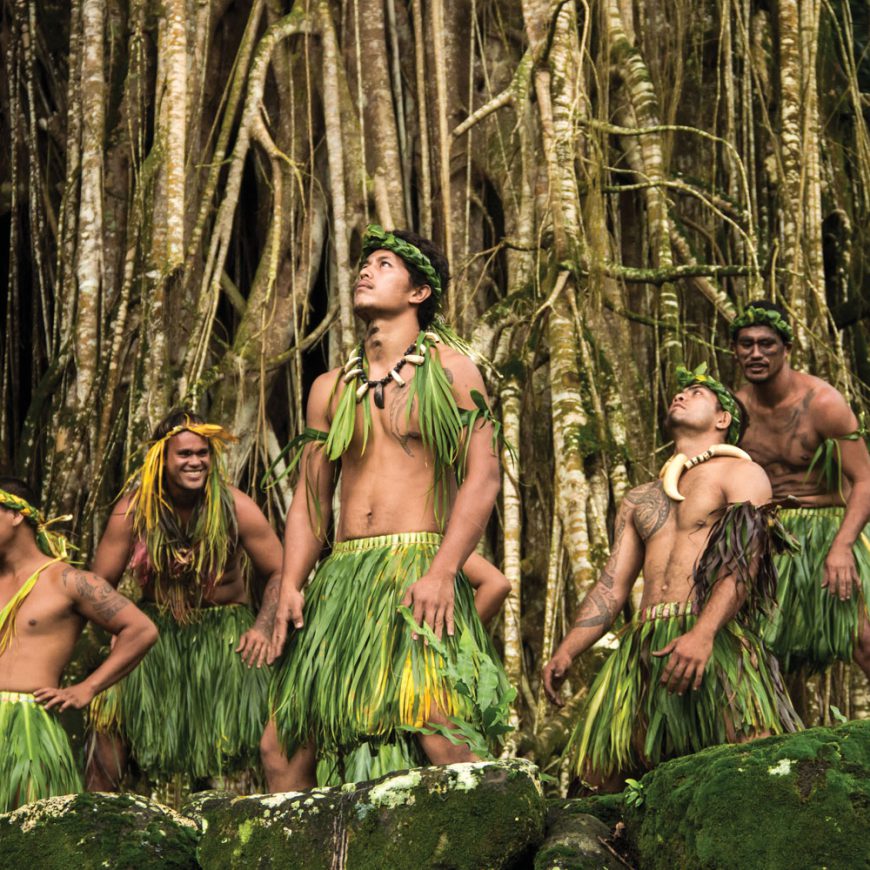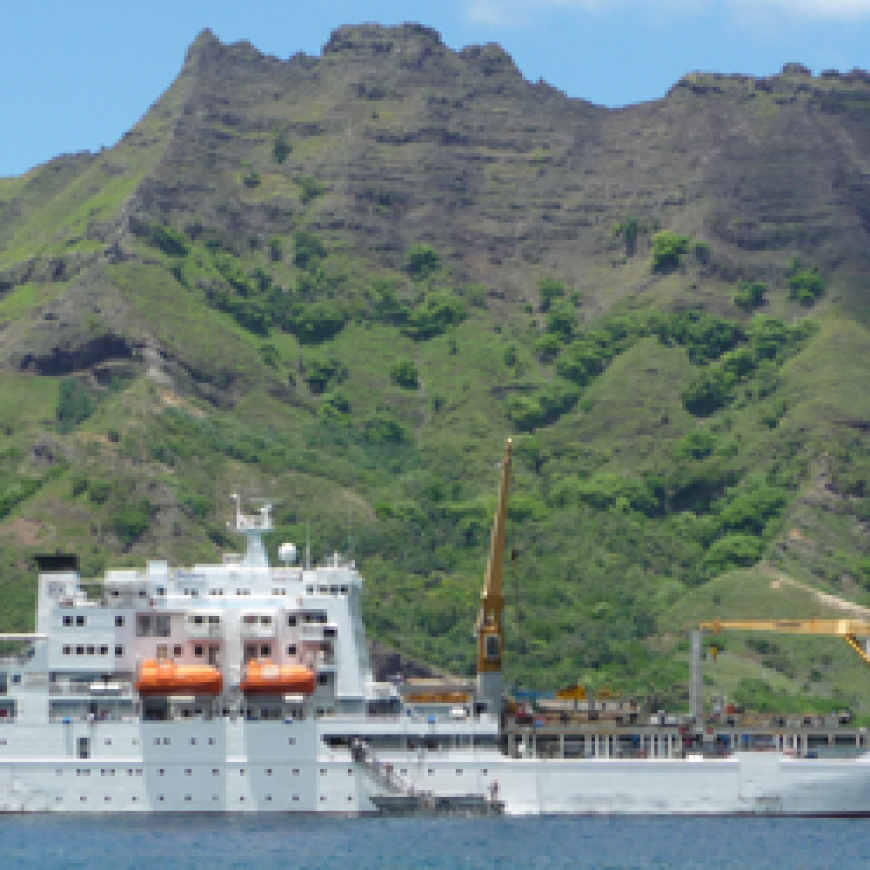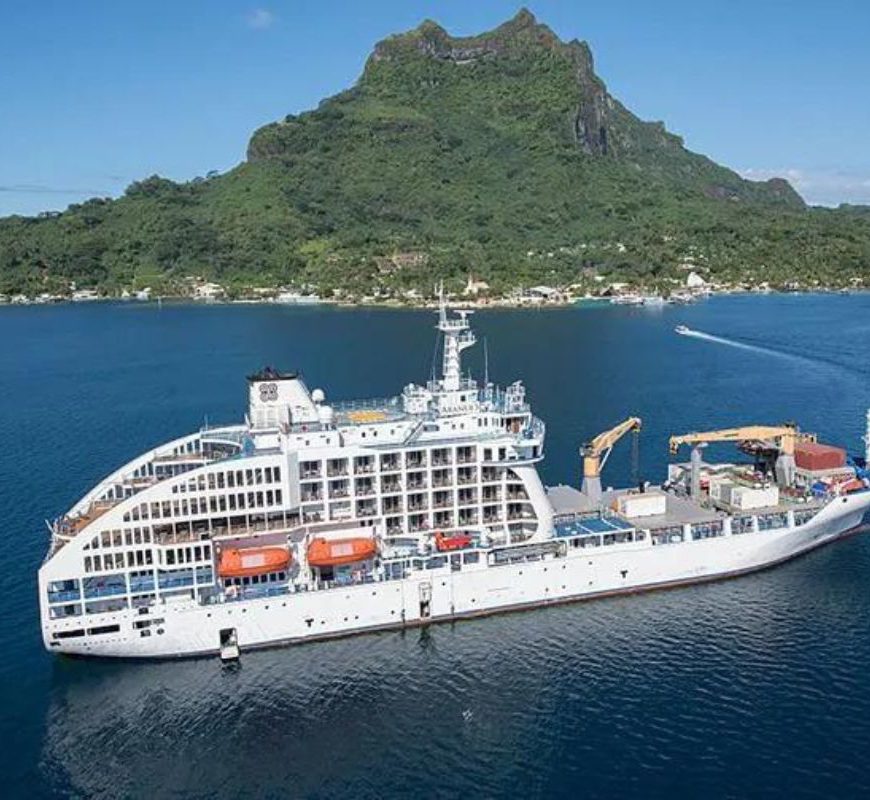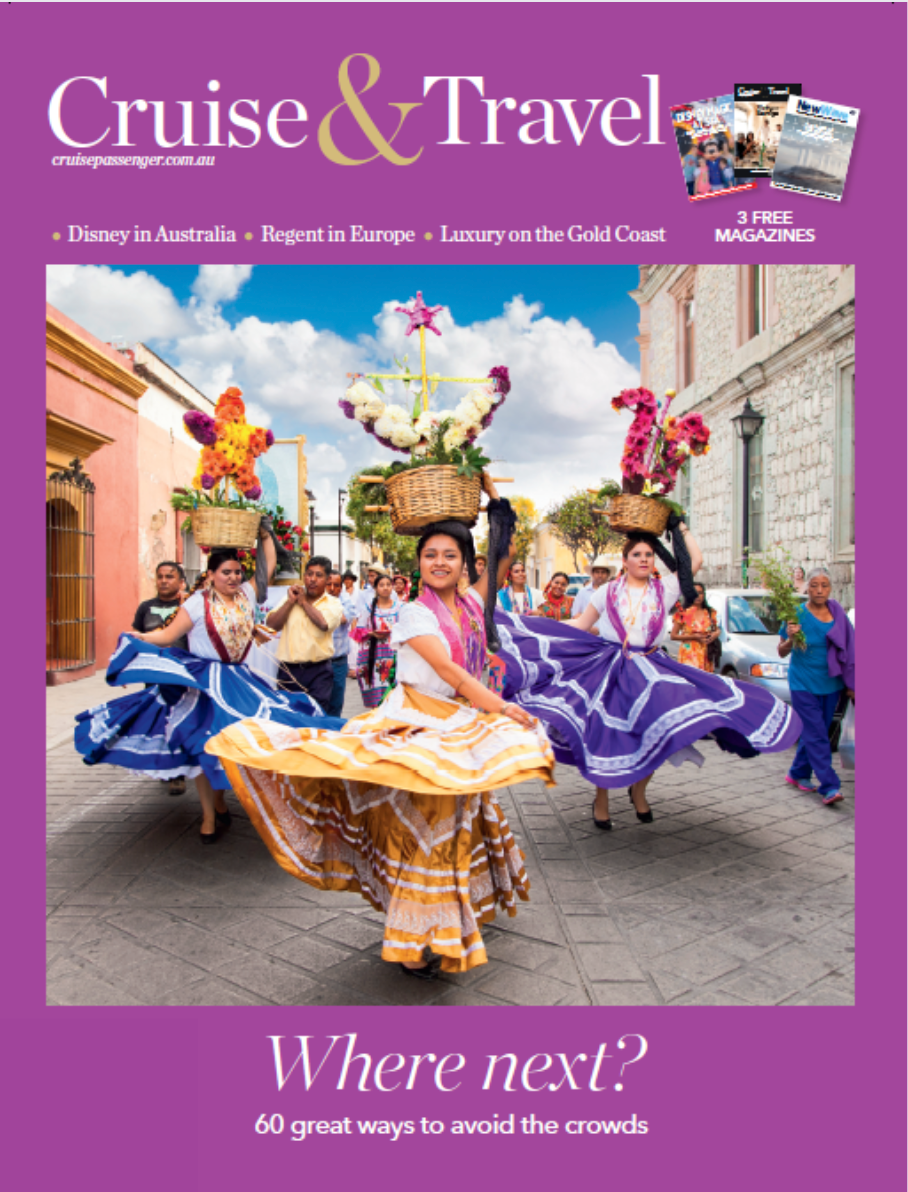French Polynesia aboard Aranui 3
ReviewsOn islands as far away as one can get, a once-mighty Polynesian culture is gradually returning to its former glory. Words & photos: Roderick Eime.
The islanders gathered around the newcomers, gazing curiously at their pale and pocked skin, examining their unusual garments and incomprehensible footwear. The strangers carried long metal objects, books and religious objects, the likes of which they’d never seen before.
Then, just as a simple dialogue began with hands and gestures, the wrath of God was unleashed. The sharp crack of a dozen muskets tore the peaceful air apart, followed by the gut-wrenching sound of flying metal on bare flesh. Before anyone knew what had happened, scores of men, women and children lay sprawled on the sand, now running red with their blood.
The year was 1595 and this was the Polynesians’ first encounter with Europeans, their ferocious weapons, pompous manners and short tempers. Álvaro de Mendaña de Neira was one of the elite Spanish navigators then scouring the Pacific in search of more gold and civilisations to plunder in the name of king and God. Despite the reprehensible carnage, there was still time for Mass before they continued their voyage.
Mendaña named the islands Las Islas de Marquesas de Mendoça (Mendoza) after his patron and uncle, the viceroy of Peru; it’s a name that persists to this day and still serves as an uncomfortable memory of those first encounters.
Almost 200 years later, in June 1774, our own Lieutenant James Cook re-discovered these islands and likewise found the inhabitants friendly, generous and attractive, despite being forced to shoot one for theft. He moved on, only to be followed by Americans Joseph Ingraham, David Porter, Herman Melville and many unnamed whalers.
The stream of idealistic missionaries began at the start of the 19th century and met considerable resistance, though the bible-toting interlopers were treated well by their hosts.
Racked with disease and bitter infighting, the once strong and healthy population collapsed into chaos and the islands finally fell to the French. By 1870, Les Îles Marquises were firmly established as part of their expanding collectivité d’outre-mer.
Sailing in to any of these stunning islands today, there is little to remind the visitor that such turmoil ever existed. Villages swept by soothing ocean breezes dot the coastlines of the six inhabited islands, all splendidly isolated from the tribulations of modern life. On some, the locals’ only contact is the fortnightly arrival of Aranui 3 with her cargo of food, consumer goods and tourists.
Compagnie Polynesienne de Transport Maritime (CPTM) has supplied the marine lifeline to this far-flung archipelago for almost 50 years and has upgraded the service progressively, to the point where the 14-day voyage is now marketed as one of the world’s must-do adventure cruises.
If that sounds like an exaggeration, do a quick list check. Visited by an honour roll of the world’s most famous modern and historic explorers, these volcanic islands stick out of the ocean like a dragon’s bottom, with some peaks reaching 1,200 metres or more above sea level. Vegetation clings desperately to sheer craggy outcrops, cutting up vertically through the dense rainforest matting beneath. Next to that other Polynesian ‘paradise’, Hawai’i, Marquesas is the most remote inhabited archipelago on Earth.
No romantic tropical island would be complete without a star-studded cast of artists and musicians. The Marquesas can boast strong connections with authors Robert Louis Stevenson, Herman Melville and Thor Heyerdahl. Troubled French painter Paul Gauguin created some of his masterpieces in the Marquesas, while publicity-exhausted, chain-smoking Belgian idol Jacques Brel sang his last notes on Hiva Oa.
Populated by as many as 100,000 thriving Polynesians before the arrival of Europeans, the islands now maintain a paltry 9,000 or so, the number of native Polynesians here having dipped as low as 2,000 in the early 20th century. The ravaged Marquesan culture, nevertheless, is making a comeback. At each island visited, guests are fêted with song, dance and feasting – a welcome that’s not unlike something that the first Europeans to land here might have experienced. Young maidens dance energetically to drumbeats after a fashion that would have sent 19th-century missionaries scampering for their rosaries.
Intricate and ornate carvings are offered, in natural materials such as basalt, bone and the much-coveted flower stone – a kind of volcanic anomaly that produces tiny starbursts in the metal. Turtle, manta ray, tiki and whale motifs dominate.
One of the most prominent features of the revival is literally in their faces. The ancient art of tattooing is enjoying such resurgence here that it’s almost impossible to find a Marquesan man without them. And not some hidden scribble either: a Marquesan tattoo is an intricate saga that adorns a man (or woman) and speaks directly of their status. The examples seen by early explorers would have covered almost the entire body with intricate and highly symbolic patterns. Aranui 3’s crew will eagerly display their ancestral insignia for closer inspection.
A 3,500-kilometre cruise around these islands, rich in vibrant Polynesian culture and history, will thrill you as it did the early visitors, while refreshing your hope that years of cultural vandalism may be slowly repaired.
FACT FILE
Cruise line: Compagnie Polynesienne de Transport Maritime (CPTM)
Vessel: Aranui 3
Star rating: not rated
GRT: 3,800 tons
Maximum passenger capacity: 200
Entered service: 2003
Highs
- Cultural experience
- Scenic splendour
- Natural beauty
Lows
- French Polynesia is expensive.
- Try to ensure you’re with a confirmed English-speaking group.
Want to know more?
Air New Zealand flies to Papeete. For the latest airfares and holiday deals, phone 13 2476 or visit www.airnewzealand.com.au.
Contact: Ultimate Cruising, 1300 662 943; www.ultimatecruising.com.au.
For more information about Tahiti Tourism, visit tahitinow.com.au.




